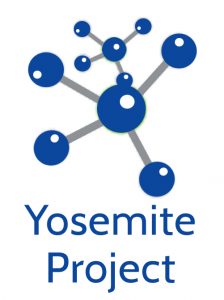 Mission
Mission
The mission of the Yosemite Project is to achieve semantic interoperability of all structured healthcare information, based on Resource Description Framework (RDF) as a universal information representation.
Organization
The Yosemite Project is a collaborative effort dedicated to healthcare information interoperability. It is comprised of experts in healthcare and technology and guided by a six-member steering committee. An announcements list is available if you wish to stay informed of Yosemite Project events, and a monthly teleconference is used to coordinate activities. Anyone who shares the Yosemite Project mission is invited to participate and contribute.
History of the Yosemite Project and its name
In 2010 the President’s Council of Advisors on Science and Technology (PCAST) released a report calling for a universal exchange language for healthcare. In response, a workshop was held at the 2013 Semantic Technology and Business Conference to explore the possibility of using the W3C Resource Description Framework (RDF) as a universal healthcare exchange language. The workshop culminated in the release of a proclamation dubbed The Yosemite Manifesto, which identifies RDF as “the best available candidate” for a universal healthcare exchange language, and lays out five principles for its use. It has since been signed by over 100 thought leaders in healthcare and technology. To help operationalize the principles embodied in the Yosemite Manifesto, a year later the Yosemite Project was launched and announced at the 2014 Semantic Technology and Business Conference.
The Yosemite Manifesto was named after the conference room at the San Francisco Hilton where the 2013 workshop on RDF as a Universal Healthcare Exchange Language was scheduled to be held. A last minute room change shifted the workshop from the Yosemite room to the Plaza A conference room, but participants liked the name Yosemite better than Plaza A, so Yosemite stuck.
